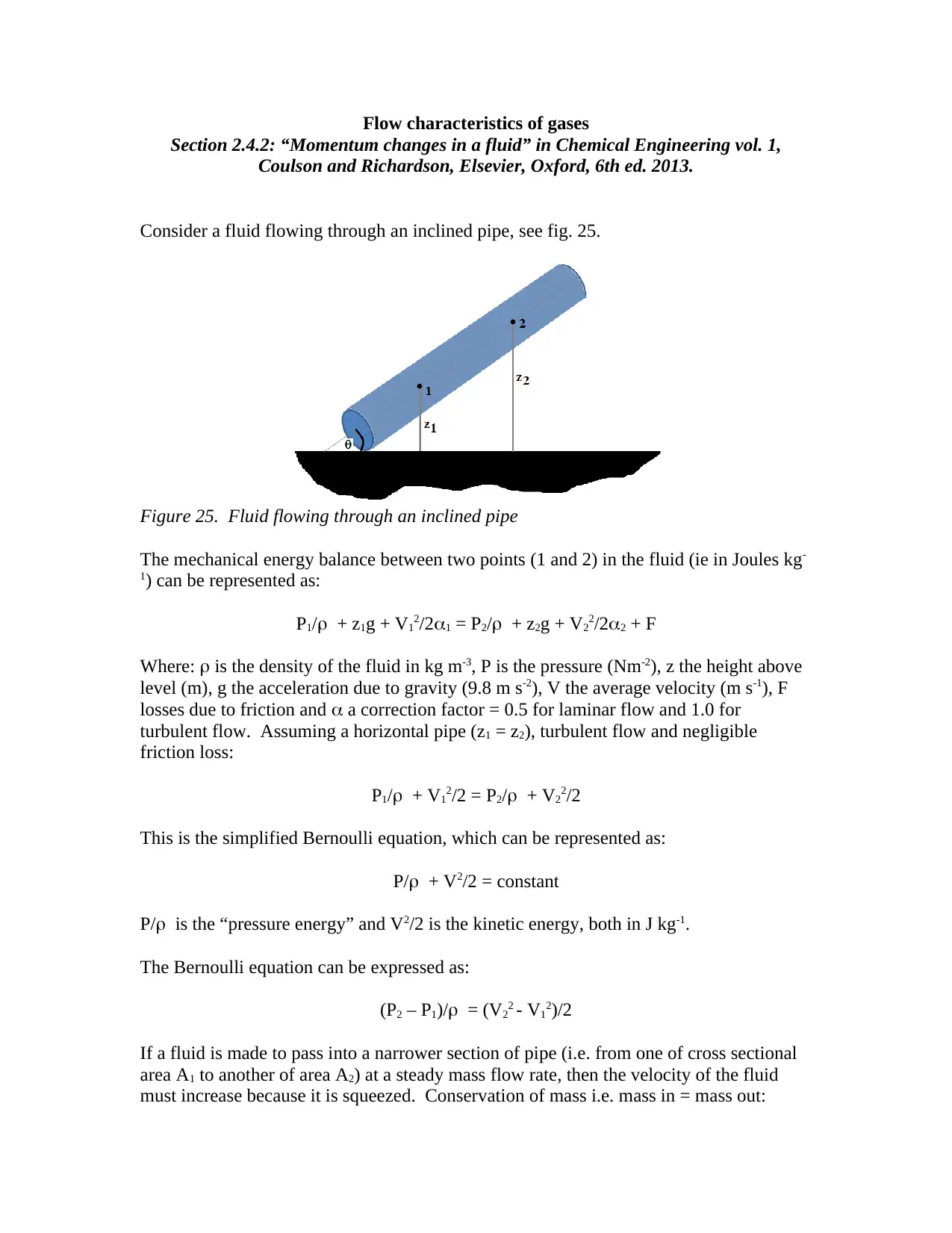Fluid Flow Analysis: Bernoulli's Equation and Momentum Changes
VerifiedAdded on 2019/09/23
|2
|376
|337
Report
AI Summary
This report analyzes fluid flow through an inclined pipe, focusing on the application of Bernoulli's equation and momentum changes. It starts with the mechanical energy balance, including pressure, height, velocity, and friction losses. The report simplifies the equation for horizontal pipes and turbulent flow, leading to the Bernoulli equation, which relates pressure and kinetic energy. The analysis then explores incompressible flow through varying pipe cross-sections, demonstrating how velocity changes affect pressure. The report derives an equation showing the relationship between velocity and pressure difference, concluding that a plot of velocity versus pressure difference should be a straight line. This analysis provides a comprehensive understanding of fluid dynamics principles.
1 out of 2








![[object Object]](/_next/static/media/star-bottom.7253800d.svg)